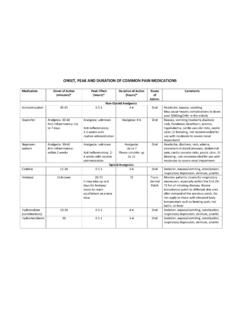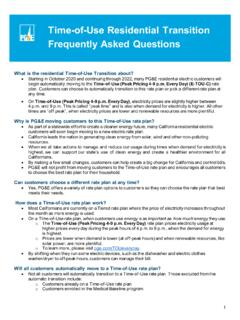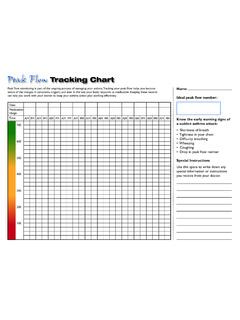Transcription of Lecture 1: Introduction and Peak Finding
1 Lecture 1 Introduction and peak Finding Fall 2011 Lecture 1: Introduction and peak Finding Lecture Overview Administrivia Course Overview peak Finding problem 1D and 2D versions Course Overview This course covers: Efficient procedures for solving problems on large inputs (Ex: Highway Map, Human Genome) Scalability Classic data structures and elementary algorithms (CLRS text) Real implementations in Python Fun problem sets! The course is divided into 8 modules each of which has a motivating problem and problem set(s) (except for the last module). Tentative module topics and motivating problems are as described below: 1.
2 Algorithmic Thinking: peak Finding 2. Sorting & Trees: Event Simulation 3. Hashing: Genome Comparison 4. Numerics: RSA Encryption 5. Graphs: Rubik s Cube 6. Shortest Paths: Caltech MIT 7. Dynamic Programming: Image Compression 8. Advanced Topics 1 Lecture 1 Introduction and peak Finding Fall 2011 peak Finder One-dimensional Version Position 2 is a peak if and only if b a and b c. Position 9 is a peak if i h. g fibacdeh123456789 Figure 1: a-i are numbers Problem: Find a peak if it exists (Does it always exist?) Straightforward Algorithm Start from left 4 174325612..n/2n-1nmight be peak (n) complexity worst case.
3 Figure 2: Look at n/2 elements on average, could look at n elements in the worst case What if we start in the middle? For the configuration below, we would look at n/2 elements. Would we have to ever look at more than n/2 elements if we start in the middle, and choose a direction based on which neighboring element is larger that the middle element? n/22 Lecture 1 Introduction and peak Finding Fall 2011 Can we do better? 12..n/2n-1nlook at n/2 position..n/2 -1n/2 +1 Figure 3: Divide & Conquer If a[n/2] < a[n/2 1] then only look at left half 1 .. n/2 1 to look for peak Else if a[n/2] < a[n/2 + 1] then only look at right half n/2 + 1.
4 N to look for peak Else n/2 position is a peak : WHY? a[n/2] a[n/2 1] a[n/2] a[n/2 + 1] What is the complexity? T (n) = T (n/2) + (1)= (1) + .. + (1) (log2(n) times) = (log2(n))'-v " to compare a[n/2] to neighbors In order to sum up the (i) s as we do here, we need to find a constant that works for all. If n = 1000000, (n) algo needs 13 sec in python. If algo is (log n) we only need sec. Argue that the algorithm is correct. Two-dimensional Version cbaedn rowsm columnsFigure 4: Greedy Ascent Algorithm: (nm) complexity, (n 2) algorithm if m = n a is a 2D- peak iff a b, a d, a c, a e 3 Lecture 1 Introduction and peak Finding Fall 2011 14131215169 11 1717 1920 Figure 5: Circled value is peak .
5 Attempt # 1: Extend 1D Divide and Conquer to 2D ij = m/2 Pick middle column j = m/2. Find a 1D- peak at i, j. Use (i, j) as a start point on row i to find 1D- peak on row i. Attempt #1 fails Problem: 2D- peak may not exist on row i 14131215169 111017 1920 End up with 14 which is not a 2D- peak . 4 Lecture 1 Introduction and peak Finding Fall 2011 Attempt # 2 Pick middle column j = m/2 Find global maximum on column j at (i, j) Compare (i, j 1), (i, j), (i, j + 1) Pick left columns of (i, j 1) > (i, j) Similarly for right (i, j) is a 2D- peak if neither condition holds WHY?
6 Solve the new problem with half the number of columns. When you have a single column, find global maximum and you re done. Example of Attempt #2 141312151691121171920pick this column17 global max for this column11101010812112119201110101110pick this column19 global maxfor this column20 nd 2121go withComplexity of Attempt #2 If T (n, m) denotes work required to solve problem with n rows and m columns T (n, m) = T (n, m/2) + (n) (to find global maximum on a column (n rows)) T (n, m) = (n) + .. + (n)' -v " log m = (n log m) = (n log n) if m = n Question: What if we replaced global maximum with 1D- peak in Attempt #2?
7 Would that work? 5 MIT Introduction to AlgorithmsFall 2011 For information about citing these materials or our Terms of Use, visit.

















